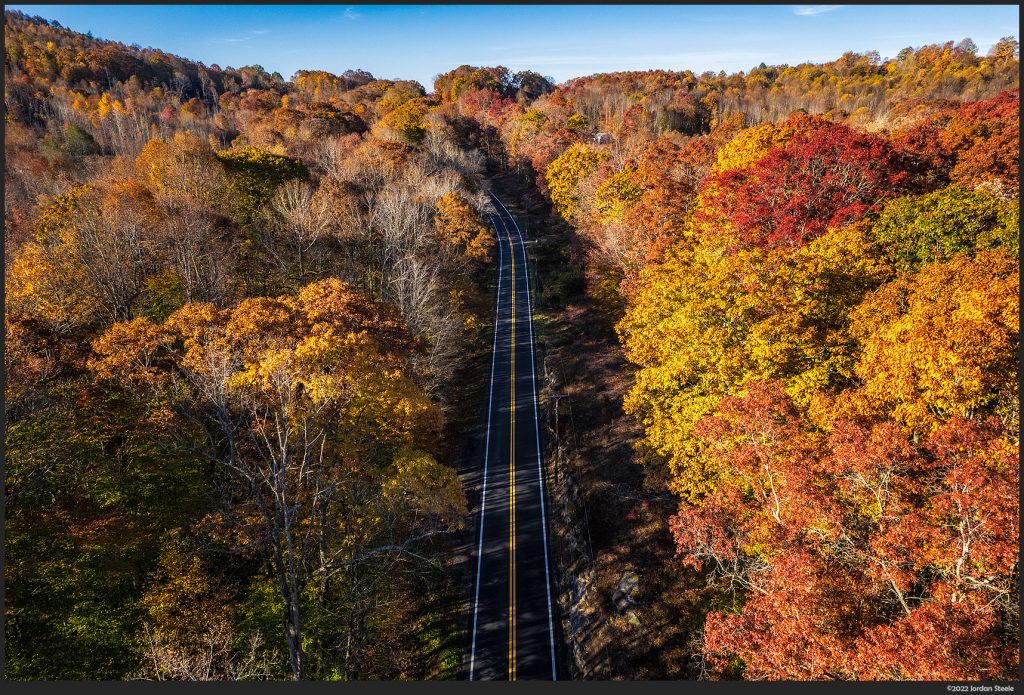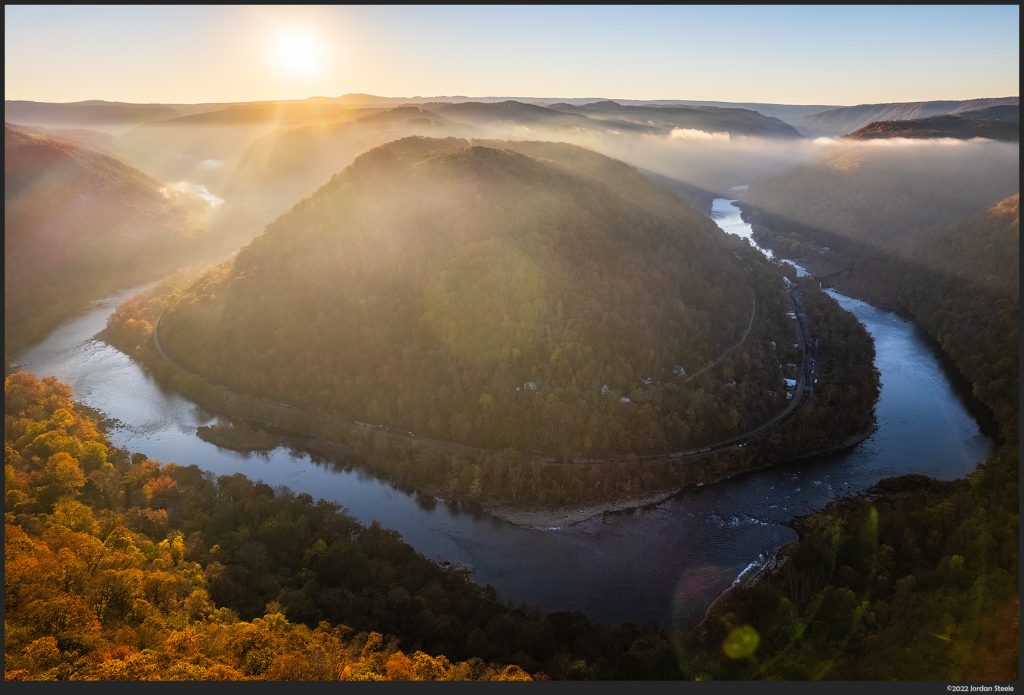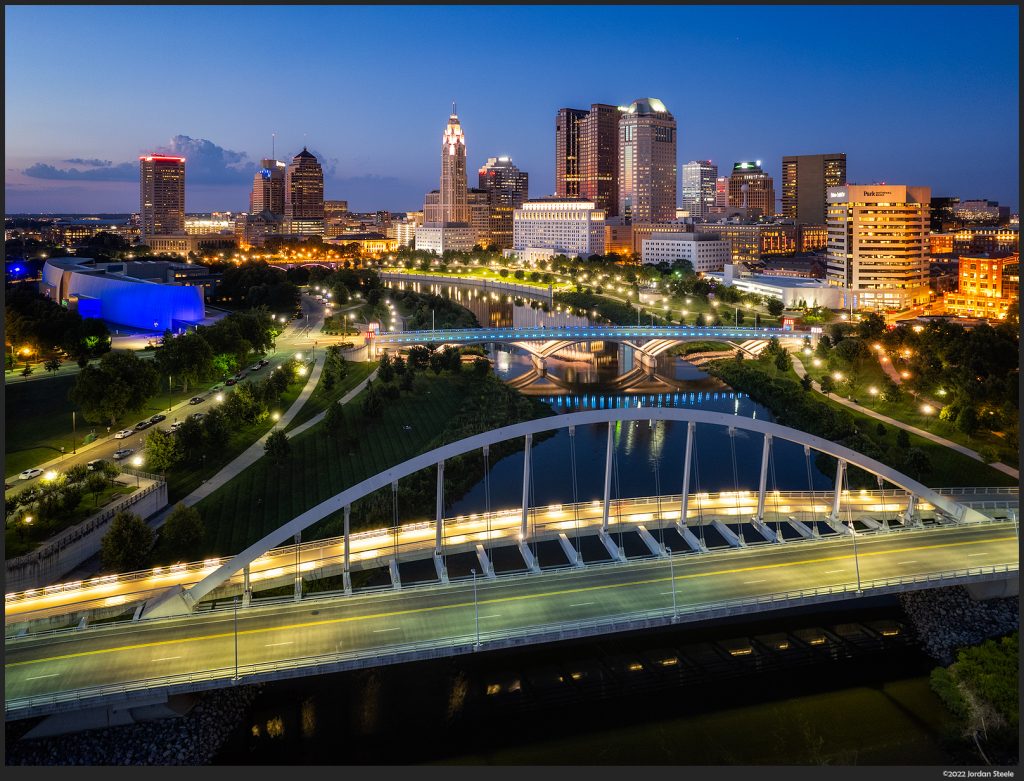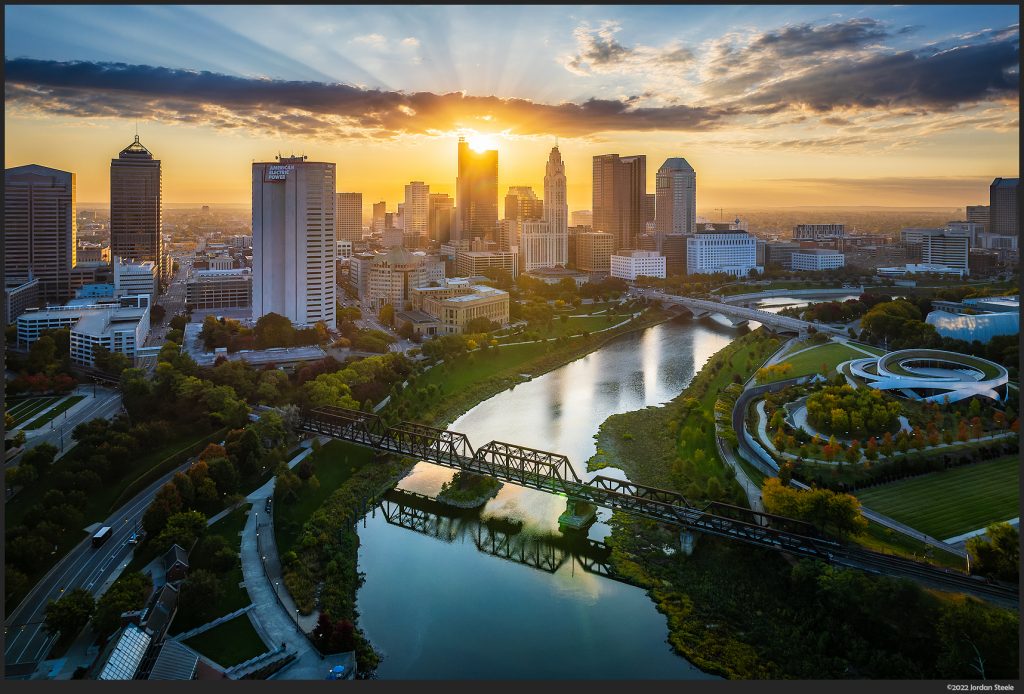Camera Quality
Well, for photographers we have come to perhaps the most important item: how good is the camera? The short answer is, it’s pretty darn good, but of course with some of the limitations of most 1″ sensor cameras, plus some other things to keep in mind.
Lens Quality
The Air2S comes with an 8.38mm f/2.8 fixed aperture lens. One of the cost cutting measures with the Air 2S vs. its higher priced Mavic brothers is the loss of an adjustable aperture diaphragm. This loss is probably the biggest true downside to the camera, as having that adjustable diaphragm would come in very handy for adding a touch of extra corner sharpness, adding sunstars, or for moderating exposure for both video and stills. Depth of field isn’t too much of a concern, however, as with a sensor of this size and the typical distances that are involved in aerial photography, it is rare that you will be taking photos where there is any background blur at all.

The lens is a reasonably sharp optic, with excellent central sharpness that fades a bit towards the edges, and with some softness in the corners. Color and contrast are rather good. There is plenty of native vignetting and some distortion, though these are corrected in-camera with built-in lens profiles that cannot be disabled in a program like Lightroom. Some other RAW converters will not apply the corrections, but I would say you would almost always want the lens corrections applied anyway.

While the lens is generally very competent, when shooting directly into the sun, it can flare rather spectacularly, as you can see in the image above. As you’ll see in some of the other samples in this review, however, when the sun is partially shielded or in different positions, flare doesn’t seem to pose much of a problem.
Overall, I’m pleased with the lens quality on a reasonably priced drone like this. It’s good enough to create quality images, that are easily printable to 24″ or so, and look very nice. There’s room for improvement, but it’s a competent optic.
Sensor Quality
While a 1″ sensor isn’t going to compete with a modern full-frame mirrorless camera with regards to image quality, it is a large enough imaging device to yield relatively good dynamic range, color accuracy and noise control. Of course, this is relative. At base ISO, there some fine grain visible (that cleans up very nicely with noise reduction software if desired), with good color response. At higher ISOs, noise starts to become more prominent, at least for stills work. I’d generally stick to ISO 400 and below if possible, though I’ve gotten usable images at ISO 1600 with proper post-processing. Thankfully, with the truly outstanding stabilization offered by the gimbal and flight capabilities, I very rarely need to shoot at ISOs greater than ISO 400, and even for most city shooting at night, I tend to shoot at ISO 100 or 200.

Dynamic range is good for a 1″ sensor, but of course falls short of APS-C and full-frame image sensors. For most shooting, the RAW files give enough flexibility to do what you want with the tones, even in contrasty situations. However, in areas where both bright sun and deep shadows are present, or when shooting into the sun, the dynamic range isn’t really enough. Thankfully, the DJI software has auto-exposure bracketing, allowing you to merge to HDR after the fact. As I mentioned earlier, though, I wish it had options for much wider bracketing steps. The shot below was taken with the city backlit at sunrise, and is a 5 shot AEB HDR shot, and with this method, I think yields all the dynamic range I would typically need.

Video
I have mentioned in many of my reviews that I am not a videographer. This is definitely still the case, but the Air2S is coaxing me to become more of one. I don’t shoot all that much video with the drone, but I do tend to take a few clips on most days that I shoot with it. As I am most definitely not a video expert, I will leave detailed evaluation of the video features and quality to those more experienced, but I’ll give a brief overview and my thoughts
The Air 2S can shoot full width 5.4K video at 24 or 30 fps, full width 4K at the same frame rates, 4K 60fps with a crop, and 1080p at up to 180 fps. I tend to shoot at 4K and 30fps most of the time, and I shoot in LOG to maximize dynamic range. As I am a fairly novice video editor, I simply use the manufacturer provided LUTs and adjust things to taste, editing in DaVinci Resolve.
For my purposes, the video looks fantastic. LOG gives you quite good dynamic range, the video is detailed and clean, and the steadiness of the aircraft in flight makes it easy to get smooth footage. Below is a quick compilation video of clips I took around Columbus in the first few weeks I had the Air 2S. Note that in many cases, I was out shooting stills and just decided to grab a few video clips. As such, most of the time in this video I did not have the correct ND filter on the camera, and as such the shutter speed was quite a bit faster than the ideal 1/60s it should have been (and as such, leads to a bit of a choppy feel in some spots). Still, I like the way this came out, so enjoy! Be sure to set the player resolution to match your display (YouTube often defaults to a lower resolution at first).





Leave a Reply